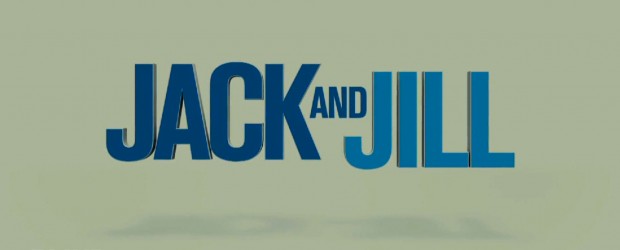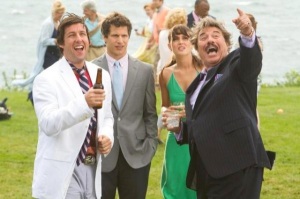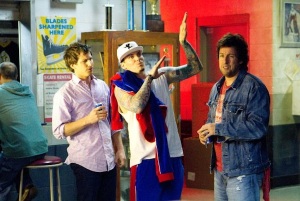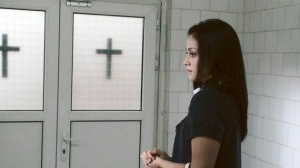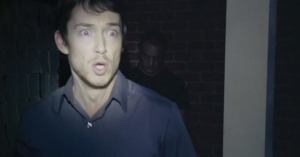Originally Posted November 12th, 2011
It’s getting easier to believe that Adam Sandler has been orchestrating some Andy Kaufman-esque prank over the last few years. After America’s tepid response to his more dramatic roles in films like Funny People, perhaps Sandler decided that the best revenge was to give the people exactly what they want: shallow, inoffensive fast-food comedies like Grown Ups and Just Go With It, that, despite all evidence pointing towards their mostly meritless existence, still gross over $100 million. The hope was that these films would make his comeback as a dramatic actor all the more incredible but with Jack and Jill, the most reprehensibly lazy cash-grab yet to bare the Happy Madison name, what little dignity Sandler had left is publicly flayed, and it’s entirely his own fault.

Then again, you didn’t really need me to tell you that did you? The concept of a movie where Sandler plays his own twin sister is parody, maybe deserving of a five minute SNL sketch, yet here we are, with a 90 minute film all about Sandler dealing with his identical twin sister over the holidays. According to the filmmakers, twins are just the wackiest thing in the world, and you’d better think so to if you want to wring any enjoyment out of non-stop gags about twin powers, secret languages and Sandler mirroring himself on screen. No seriously, that’s the joke, there’s two of him and he’s doing the same thing, but one of him’s a lady!
And what a lady he is. Sandler’s been criticized for his over-reliance on characters with silly voices, but either he’s not listening, or just doesn’t care, because Jill is like the muse from which all those stupid voices and characters have originated. Oh sure, she’s loud, abrasive, and in all likelihood, mentally disturbed; that’s kinda the point of her as a catalyst for mayhem. She jumps from oblivious to shrill to psychotic and back again, often within the same scene, but when the filmmakers try to turn our disdain around on us to make you feel sorry for her, it’s insanity. Endearment in the writer’s eyes is Jill’s inability to remember movie titles correctly, and having a pet macaw named Poopsie. This is a repugnant, loathsome creation, devoid of any ounce of sympathy and one that I can only pray is too absurd for real life.
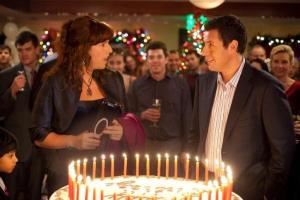
Granted, Jack and Jill’s version of L.A. seems overrun with gross comic characterizations that are often more frightening than funny. This is a world where someone almost gets the crap kicked out of him because he’s an atheist; not because he’s belittling the beliefs of others, no, just being atheist is grounds enough to be violently threatened. But hey, you book John McEnroe, you get him to yell at someone, because that’s still funny, right? Then there’s Sandler’s daughter, who creepishly carries around a doll dressed as herself through the entire film, which gets stranger and stranger the longer the movie goes without someone commenting on it. That’s not a character trait, it’s just weird, and Katie Holmes as Sandler’s wife is the closest thing to a sane voice in the film, though her refusal to acknowledge the utter nonsense around her probably makes her just as complicit in it.
Finally, there’s Jack, who should theoretically be the one identifiable person in this freak show, but is instead the most unlikeable everyman of Sandler’s increasing catalogue of lifeless family men. While having to exist in the same universe as Jill might be an excuse for frustration, it doesn’t explain why Sandler though it would be clever to play Jack as a raging, manipulative asshole, made abundantly clear through his cruelty to all those around him, particularly his employees. Oh by the way, he’s an ad exec, which might be a meta-commentary on the absurd amount of product placement in the film, but it'll probably just top-off your hatred for Jack as a human being.

Sandler just seems pissed off whenever he’s not in drag, which I think is coming from a very real place (no, not like that). Here we see Sandler looking at himself, or rather, the shtick-peddler he has become, and you can sense his frustration, with Jill embodying the kinds of sell-out characters he’s resorted to making as an appeal to a common denominator that couldn’t be any lower if it were subterranean. You just know that Sandler isn’t happy with this project, and worse, he knows that you know, hell, everyone seems acutely aware that this will be the career nadir for dozens.
It’s like watching a death row inmate relive his past crimes; you can sense his regret, but if he can’t forgive himself, why should we? And if this is Sandler’s execution, at least all his friends came by to observe it. The celebrity cameos are relentless, with usual suspects David Spade and Nick Swardson joined by pop culture throw-aways like Shamwow Guy and Subway’s Jared. But it’s not just the hacks Sandler roped in; Johnny Depp and Norm MacDonald are both palpably embarrassed in brief cameos, but at least the fleeting thrill of seeing them onscreen is a nice diversion. The big gun really is Al “Yes I have an Oscar” Pacino, in what’s probably his most fearless role in years. Playing himself offers up myriad easy jokes about his great roles of old, and he’s still woefully underserved by the script, but god love him for putting so much damn effort into this. It’d be easy to compare Pacino’s career spiral to Sandler’s, but at least here, Pacino dives into the material earnestly, almost sacrificially, in an effort to inject something, anything, resembling fun into this disaster.

Spoilers be damned, I can’t think of a better way to sum up my thoughts on Jack and Jill than to paraphrase the closing dialogue of Jack and Pacino as they watch their atrocious, quote-destroying Dunkin’ Donuts collaboration, an ad that is supposed to be the film’s big triumph:
Sandler: So what’d you think?
Pacino: Burn it. Destroy every copy. No one can ever know that this existed.
It’s not hard to figure out what Pacino and Sandler are actually talking about, the only question is whether this admission is more funny or pathetic. I’d side with the latter. There’s little about Jack and Jill that you could describe as funny.
1 out of 5
Directed by Dennis Dugan
2011, USA

